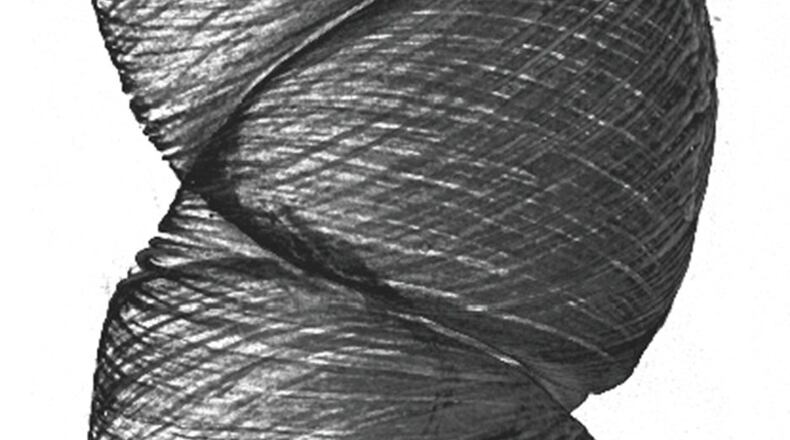“Technologies like this do not yet exist,” said Dr. Lawrence Drummy, a senior materials engineer at the AFRL. “These are energy harvesters for mechanical energy, and they could potentially eliminate the need for external power supplies, such as batteries, on a host of wearable devices. The potential application space is enormous.”
Typical power generation devices, such as piezoelectrics, are hard, often made of ceramic material and generate power mechanically, usually through an external charge. Since they are hard, there is a limited ability of these materials to capture energy when deformed. Twistron yarns, by contrast, are able to deform and still capture energy. Often, all that is required is a submersion in an electrolyte to charge the yarns, enabling energy output.
The flexibility, low weight and broad range over which the twistron yarns can harvest mechanical energy offers a wide range of potential applications for the new material. Perhaps most exciting for the Air Force researchers are the possible applications for powering of flexible devices and for augmenting the human-machine interface.
“Humans move a lot, so in order to have something that interfaces well between the human and machine, it has to move like a human and be able to stretch a lot – like skin,” said Dr. Benji Maruyama, the AFRL Flexible Materials and Processes team lead. “The superior properties of these yarns which can twist and pull and generate their own voltage and power, open the potential for generating power through a human’s movement and even by using their own sweat.”
This human-machine application of the yarns was tested in the laboratory in a number of ways over the course of the research. By connecting a yarn to an artificial muscle that contracted and expanded, researchers were able to convert the change in temperature into electrical energy. In another instance, twistron yarns sewn into a shirt were used to monitor and sense changes in respiration.
“If you wear clothing with these yarns sewn in, it’s possible that just by moving your body, you can generate power. It would be almost like wearing a superhero suit,” said Maruyama.
The high-tech yarns were also tested in nature. By immersing the coiled twistron yarns in the Gyeonpo Sea off the coast of South Korea, research collaborators there demonstrated the yarn’s ability to harvest the energy of ocean waves. Ultimately, the yarns may prove useful in harvesting enormous amounts of energy simply by using the sea.
Since the research is still in the early stages, harvesting sea energy or outfitting Airmen with superhero suits is still far in the future. For now, scientists at AFRL are working to better understand just how the twistron yarns work by examining their carbon nanotube structure at the nanoscale.
By examining the carbon nanotube fibers using an X-ray nano-tomography system, Drummy hopes to better understand the three-dimensional structure of the yarns and how structure changes when they are deformed. The X-ray tomography system enables him to characterize the material at the nanoscale – smaller than the diameter of a human hair – to see how they behave and gain a better understanding of the dynamic process of energy generation.
“There are a still a lot of unanswered questions, even at our current research state. What is the detailed mechanism that make these work? How does the structure evolve under mechanical strain? How can we optimize them for the future? We need to understand how the yarn fibers deform to allow ions to go in-and-out to generate power,” said Drummy.
By understanding the way they work, scientists can better fabricate them and apply them to the technology the Air Force needs now and in the future.
“This is the first time this material was demonstrated, and the yarns really open up the potential to power new applications. Though there are still questions unanswered, we have the tools to figure them out,” said Drummy.
The twistron yarns research was published in the journal, Science, on Aug. 25 with the title "Harvesting electrical energy from carbon nanotube yarn twist." It is available online at http://science.sciencemag.org/content/357/6353/773.
About the Author
